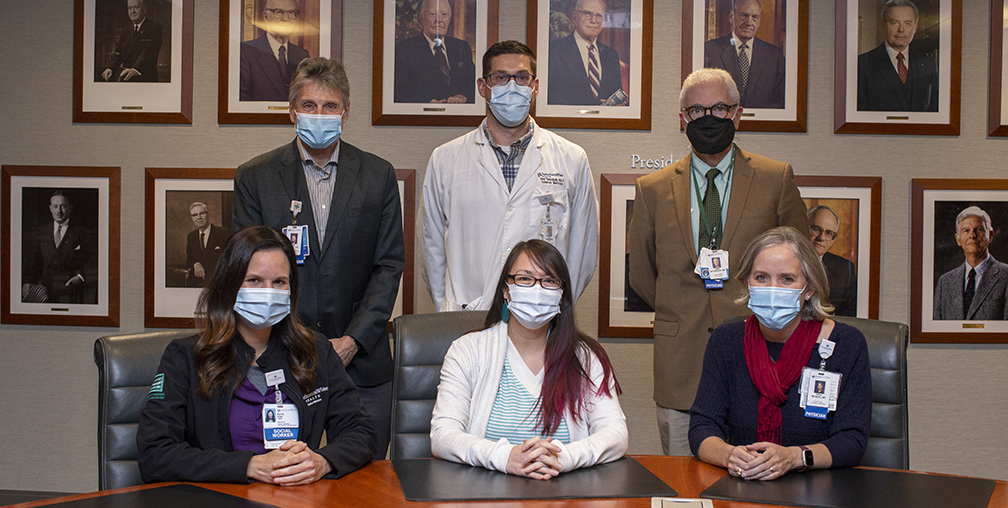Baylor Scott & White Health, Baylor Scott & White Medical Center, Temple
Project: Solving High Utilization Patients
At Baylor Scott & White Health’s academic medical center in Temple, Texas, the same patients kept coming into the emergency department (ED) for urgent as well as primary and specialty care. At the Temple facility, these high utilizer (HU) patients were responsible for 1.2% of admissions in 2018 and 3.9% of readmissions in 2018. The health care providers at the Temple facility recognized that breaking the cycle of readmissions could improve the quality of and support better and more appropriate utilization of services in the right setting.
To address high utilizers, the Temple facility launched the Complex Patient Management Team (CPMT), consisting of caregivers with expertise in internal medicine, psychiatry, case management, pharmacy, nursing and social work disciplines.

Members of the Baylor Scott & White Health Team, standing from left to right, front row: Katie Sciba, LMSW, CCM; Lydia Sutherlun, MD; Tresa McNeal, MD. Back row: Mike Averitt, DO; Joel Travnicek, PA; James Bourgeois, MD.
The methodology used empirical data to select a subset of patients quarterly. The CPMT analyzed variables and created patient-specific action plans that applied to all current and future encounters. The process consisted of six steps: goal setting, defining the target by identifying previous quarter HUs, sharing information using lists in Epic, discovering HU motivators, developing patient-specific action plans, and implementing the plan consistently across ED, outpatient and inpatient settings. The primary metric for evaluating success was ED visits and readmissions by high utilizer patients.
The key takeaway from the project showed that using a multidisciplinary team in action planning for high utilizer patients can reduce their use of ED services and lower admissions. A baseline cohort of the top 20 high utilizers from December 2018–February 2019 showed an 8% reduction in ED visits and readmissions in the three months prior to identification of the first intervention cohort. Results far exceeded the CPMT’s goal of reducing HU ED visits and readmissions by 30%. From March 2019–May 2021, the average reduction in combined ED visits and readmissions across subsequent cohorts was 35.7%. Importantly, 143 patients out of 202 total (71%) patients served by the CPMT had a decrease in readmissions.
This data was reported to hospital committees, a system-level improvement team and the governing board. With this data, the CMPT sees future opportunities to provide at-a-distance consultation and CME activities to spread best practice.
